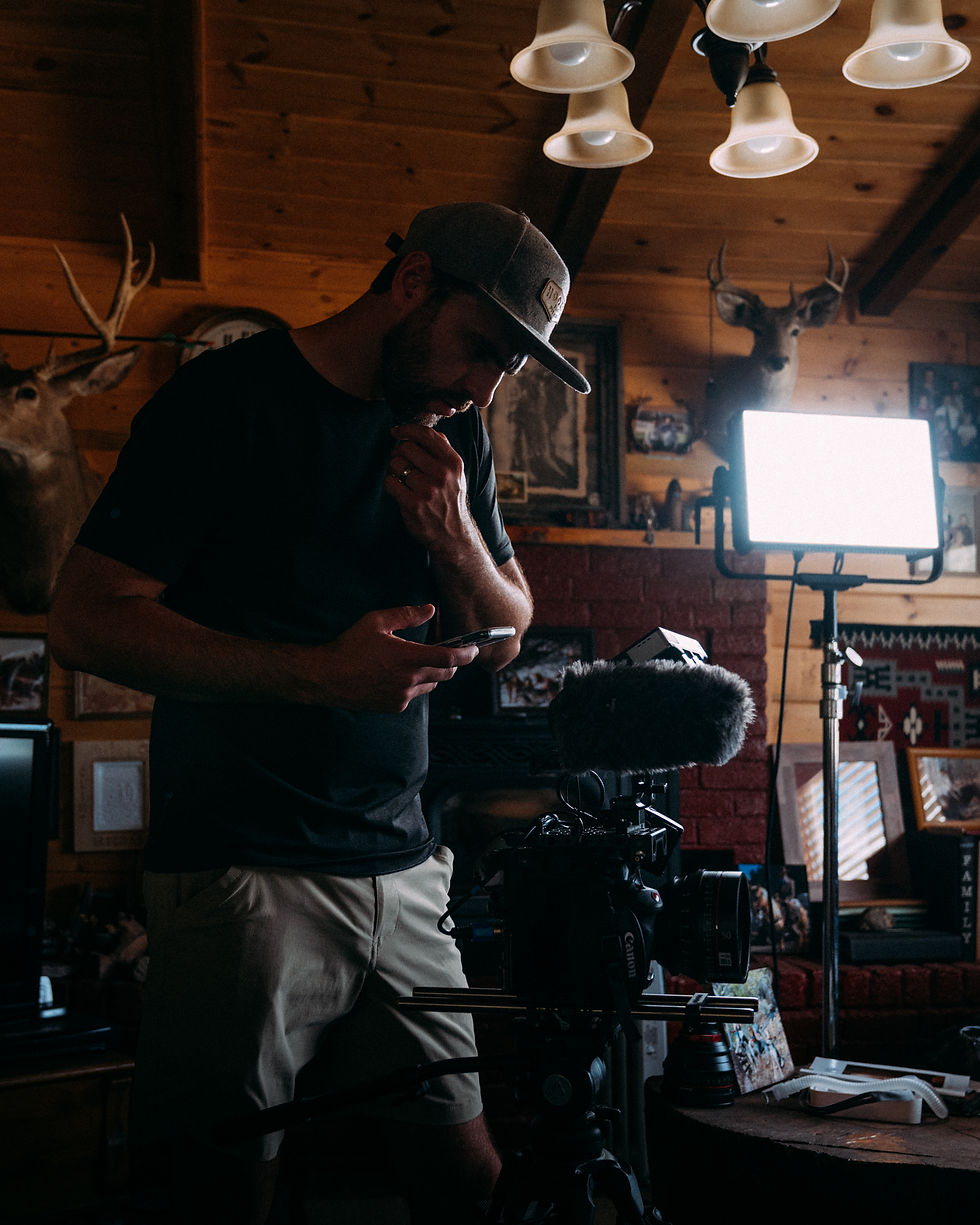Color Psychology in Filmmaking: Harnessing Emotions and Storytelling Through Colors
- daysixoutdoors
- Aug 17, 2023
- 4 min read
In the realm of filmmaking, every visual element plays a crucial role in conveying emotions, enhancing storytelling, and captivating the audience. One such powerful element is color. Whether it's the vibrant hues of a sunset-lit landscape or the monochromatic tones of a suspenseful scene, color in filmmaking is a tool that outdoor filmmakers and creatives can master to craft impactful narratives that resonate deeply with their audience.

How is Color Used in Film?
Color in your films should be INTENTIONAL! Color, as a visual language, communicates far more than aesthetics. It acts as a silent communicator that sets the mood, defines characters, and guides the audience's emotional journey throughout a film. In outdoor filmmaking, the natural landscapes provide a canvas rich with colors that filmmakers can harness to their advantage.
1. Mood Enhancement
Different colors evoke different emotions. Warm colors like reds, oranges, and yellows exude warmth, passion, and energy, making them ideal for uplifting scenes or moments of excitement. Cool colors like blues and greens evoke calmness, serenity, and introspection, which can be used effectively for contemplative or melancholic sequences.


2. Character Portrayal
Color can also be a subtle yet effective way to convey character traits and personalities. A character dressed in vibrant, contrasting colors might symbolize confidence and individuality, while muted tones could signify introversion or vulnerability.
How is Color Grading Used in Movies?
Color grading is the post-production process of adjusting and enhancing the colors of a film to achieve a specific visual style or mood. For outdoor filmmakers, color grading offers an opportunity to elevate the natural beauty of their locations and enhance the emotional impact of their stories.
1. Unifying Aesthetic
Outdoor filmmaking often involves capturing scenes in diverse lighting conditions. Color grading helps unify the visual aesthetic by adjusting colors to match the intended mood or tone, creating a seamless viewing experience. In the examples below you can see how I am using the aid of Davinci Resolve's wipe features to analyze color consistency and harmony between clips.


2. Enhancing Cinematic Styles
Color grading enables filmmakers to craft distinct visual styles that align with their narratives. For example, a gritty adventure film might utilize desaturated colors to evoke a sense of realism and harsh conditions, while a dreamy romantic sequence could feature soft, pastel tones for a romantic atmosphere.
How Does Color Create Tone in Film?
Tone refers to the overall emotional and psychological atmosphere of a film. Color plays a pivotal role in shaping tone, guiding the audience's emotional response to each scene.
1. Setting the Atmosphere
Color can instantly transport the audience to the desired setting. Warm, golden tones evoke the coziness of a sunset campfire, while cool, blue hues convey the tranquility of a serene mountain lake.
Consider the frames below from the film "LIONHEART," a collaboration between Blood Origins, Land Limited, and my own creative efforts. During the color grading process of this film, I kept in mind two distinct environments: the scorching, arid expanses of the desert and the icy serenity of the mountainous terrain. By infusing warmer tones into the desert sequences and cooler hues into the mountain scenes, I aimed to accentuate the inherent characteristics of each environment. This deliberate differentiation in color treatment not only enhances the authenticity of these landscapes but also serves as a visual guide, helping the audience navigate seamlessly through various temporal and spatial dimensions intricately woven into the storyline.



2. Transitioning Emotional Arcs
As outdoor filmmakers, you often capture the changing dynamics of nature. Color can help signal transitions in the story, such as a shift from optimism to uncertainty as the sky changes from bright blue to overcast gray.
Gathering Color Inspiration from Cinematic Masterpieces
Drawing from fellow filmmakers' work is a powerful strategy for enriching your grasp of color in outdoor filmmaking. Celebrated films offer invaluable insights into how color evokes emotions, sets atmospheres, and weaves narratives.
Consider "The Revenant," directed by Alejandro González Iñárritu. Its subdued tones blend seamlessly with the rugged wilderness. Chilly, blue snowy expanses immerse viewers in characters' harsh reality.

Similarly, "The Magnificent Seven" employs a rich color palette that mirrors its sweeping landscapes. Earthy tones evoke the Wild West's rugged essence, enhancing the film's immersive experience and storytelling.
Studying these films equips outdoor filmmakers to apply color effectively. Adapt techniques to your narratives, drawing insights much like painters from peers. In the realm of color exploration, I draw immense inspiration from platforms like SHOTDECK. This invaluable resource equips filmmakers with curated frames extracted from various films, offering a treasure trove of insights into the art of color.


In the world of outdoor filmmaking, harnessing the power of color is akin to wielding a painter's brush. Each color stroke has the potential to add depth to characters, amplify emotions, and immerse the audience in the story's world. As you embark on your filmmaking journey, remember that the landscapes you capture are not just visual backdrops but palettes of emotion waiting to be explored. By understanding the psychology of color, embracing color grading techniques, and letting color guide the tone of your films, you can create captivating narratives that leave a lasting impact on your audience.




Comments